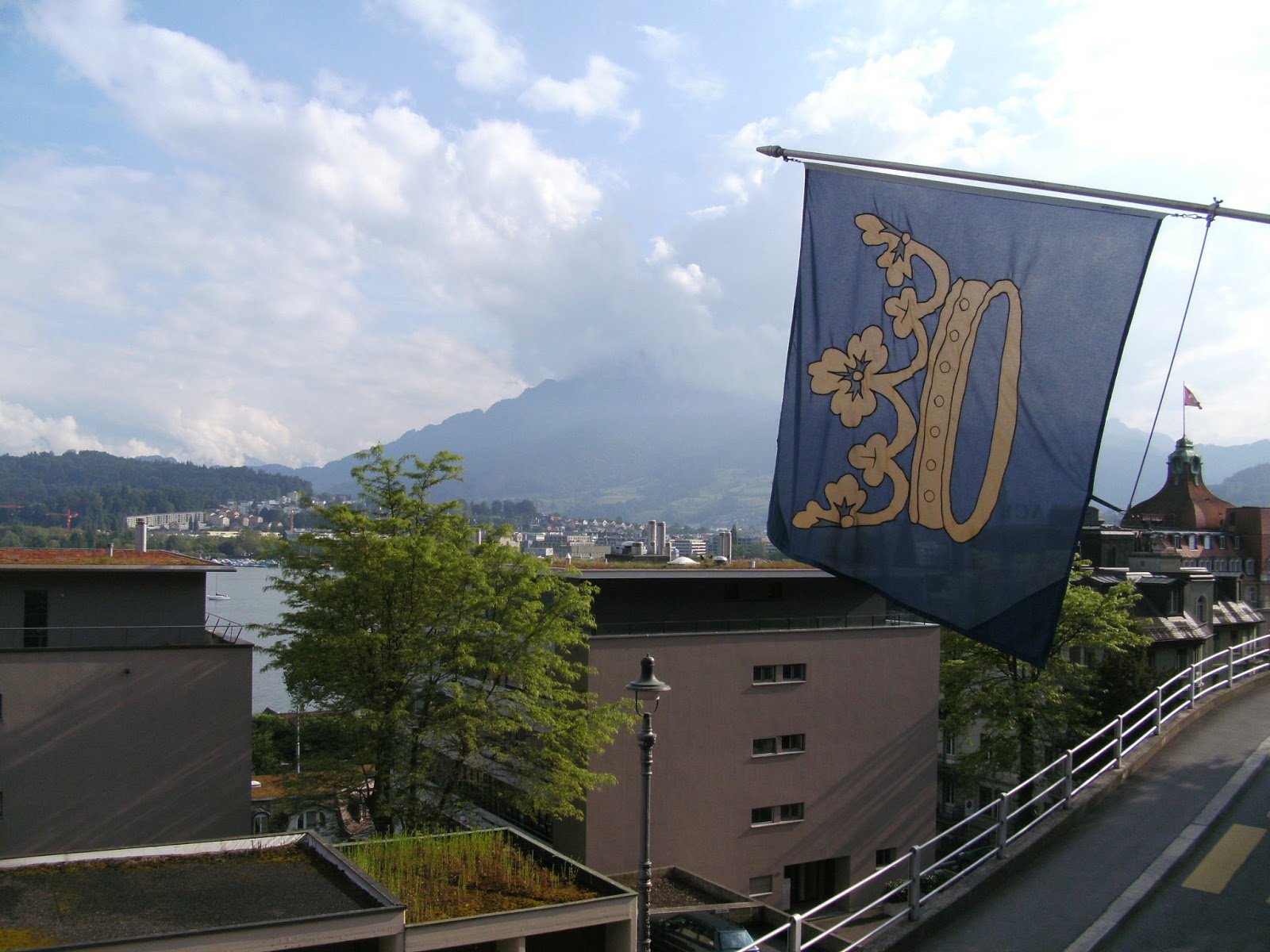 |
| Mt. Pilatus |
Today, we would visit Mt. Rigi and finally get "up close and personal" with a Swiss mountain. Finishing our lunch on the Ruess, we walk to the train station, and take a train to Arth-Goldau, and then transfer to the Rigi Bahn, the oldest cog railway in Europe (1871). Stopping just short of the top, we get off the train to take an easy hike through the fields and countryside before re-connecting with a separate line going down the backside of the mountain, taking us along a different route and to Vitznau on Lake Lucerne.

The center "rail" is for the cog on the
railcars which prevents gravity from taking over on the steep climb and descent.
 |
| We start our hike |
The weather was perfect. Clear, warm but not hot. The view was everything we'd imagined. As the path wound around, we heard them before we saw them: The cow bells!
As Swiss dairy farmers send their cattle up to higher pastures in the summer, they use the bells to help keep track of the cows. But they are also symbolic. In Alpine cow culture, the best cows get the biggest, most impressive bells. Some of the bells are enormous! And the gentle sound of 15 or 20 bells all ringing in harmony has to be heard to be appreciated. We will never forget it.
Along our walk, we came to a field where we were able to come very close to the cows, and take these photos and video. We concluded that this must be "the most famous cow in the world" as she has ended up in thousands of tourists' photo albums! She seemed quite content to let us add her to ours too!
Of course, we brought home a souvenir cow bell to remind us of the beautiful music made by Swiss cows!
After our leisurely hike, we came to the train station where we would ride the cog railway back down Mt. Rigi on our way to the lakeside and Vitznau. While we waited for the train, we had the chance to visit a lovely little chapel tucked into a grotto in the rock. The spring outside the entrance is said to have healing powers.
|
|  |
We caught our first glimpse of para-gliders soaring and drifting in the updrafts. David was ready to sign up; Peggy wasn't so sure! You will see them more clearly in the embedded video below.
 In Vitznau, we were able to see the cars on the roundhouse turntable getting ready to turn around and head back up the mountain.
In Vitznau, we were able to see the cars on the roundhouse turntable getting ready to turn around and head back up the mountain.
It had been a LONG day, and we had now only to grab the bus, and then take our "easy walk--10 minutes--no problem" up the switchback hill to Hotel Royal.
We had to pack up and get ready for our first transfer, as we were headed to Interlaken the next morning!
Today's trip: Lucerne to Mt. Rigi to Vitznau and then across the lake back to Lucerne.















































